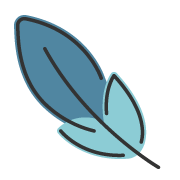Annotation
About 768 wordsAbout 3 min
2025-10-08
Description
Annotation is a special syntax in Markdown used to add extra information, explanations, or hints to a document.
Annotations are not directly displayed in the document; they require the user to manually click to be revealed.
Configuration
This feature is disabled by default. You need to enable it in the theme configuration.
export default defineUserConfig({
theme: plumeTheme({
markdown: {
annotation: true,
}
})
})Syntax
The Annotation syntax consists of two parts:
Inline Annotation
Insert an annotation marker inline using the [+label] syntax.
The annotation marker is composed of [+ + label + ]. To distinguish it clearly from the surrounding content, a space should be present at the left edge of [+label].
label is the tag for the annotation and can be any string.
The + symbol is required.
Defining Annotations
Define annotations in a separate area of the document using the [+label]: syntax.
The annotation definition area is composed of [+ + label + ]: + Content.
label should match the [+label] mentioned above and is used to identify the annotation tag.
Content can be written directly after the ::
[+label]: This is the content. **Markdown** syntax can be used here.Content can also start on the next line, but it must be indented. Consistent indentation should be maintained for multiple lines.
[+label]:
This is the content.
The indentation is consistent, so this line is also part of the content.
Even with a blank line above, this line is still consistently indented, so it is also content.
**Markdown** syntax can be used.
This line is no longer indented, so the annotation definition for this tag ended on the previous line.The content of the annotation definition is not rendered directly in the document. It is presented only when the inline [+label] marker is clicked.
Examples
Example 1
Input:
This site is powered by VuePress [+vuepress].
[+vuepress]:
VuePress is a [Static Site Generator](https://en.wikipedia.org/wiki/Static_site_generator) (SSG).
It is specifically designed for building fast, content-centric sites.Output:
This site is powered by VuePress .
Example 2
Multiple annotations defined with the same label are rendered as a list.
Input:
The ancient Chinese **Four Great Classical Novels** [+novels] are household names.
[+novels]:
**"Romance of the Three Kingdoms":**
Set against the backdrop of the Three Kingdoms period in Chinese history, it depicts the political and military struggles between the states of Wei, Shu, and Wu, shaping the images of numerous historical figures such as Zhuge Liang, Cao Cao, Guan Yu, and Liu Bei.
[+novels]:
**"Journey to the West":**
Tells the story of the monk Xuanzang and his three disciples (Sun Wukong, Zhu Bajie, Sha Wujing, and the White Dragon Horse) on their journey to the West to obtain sacred Buddhist texts, filled with mythological elements and fantastical adventures.
[+novels]:
**"Dream of the Red Chamber":**
Set against the backdrop of the decline of the four major families Jia, Shi, Wang, and Xue, it depicts the love tragedy between Jia Baoyu, Lin Daiyu, and Xue Baochai, revealing the corruption and decay of feudal society.
[+novels]:
**"Water Margin":**
Depicts the story of 108 outlaws, led by Song Jiang, who gather at Liangshan Marsh during the late Northern Song Dynasty to rebel against the imperial government, showcasing the social reality of oppression leading to rebellion.Output:
The ancient Chinese Four Great Classical Novels are household names.
